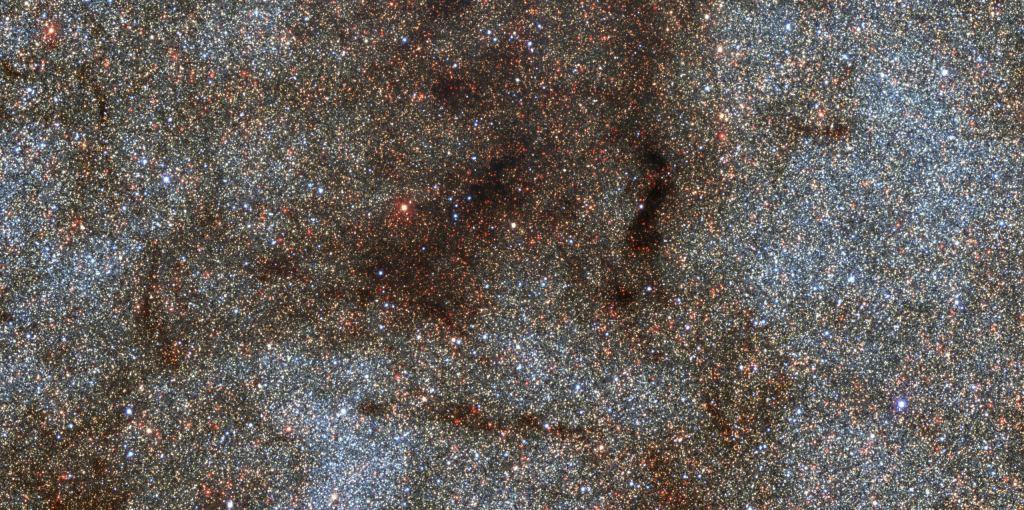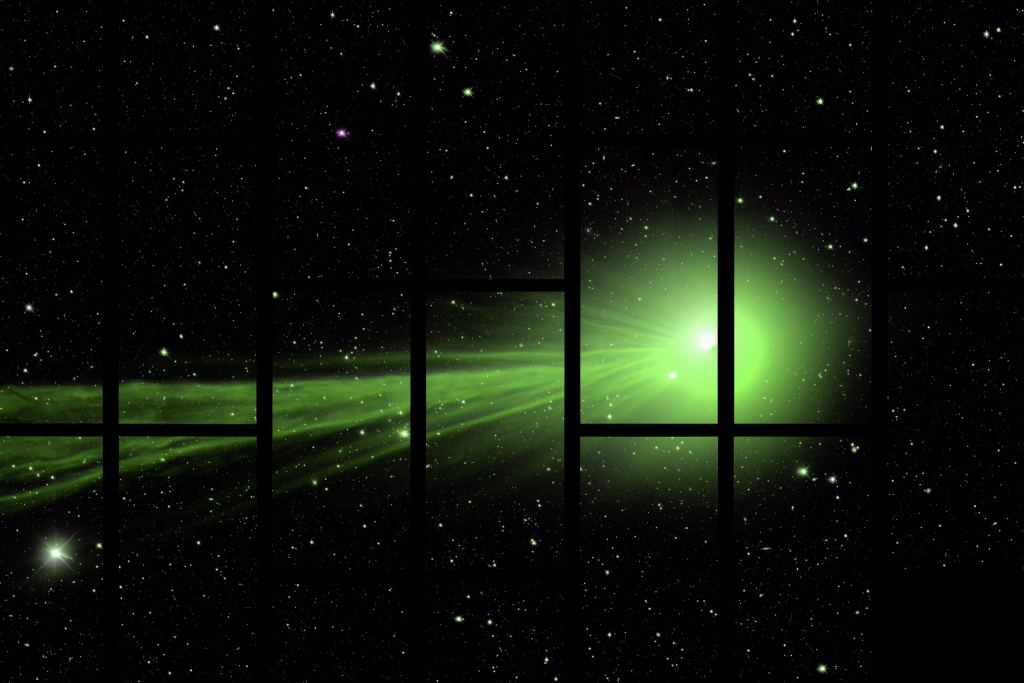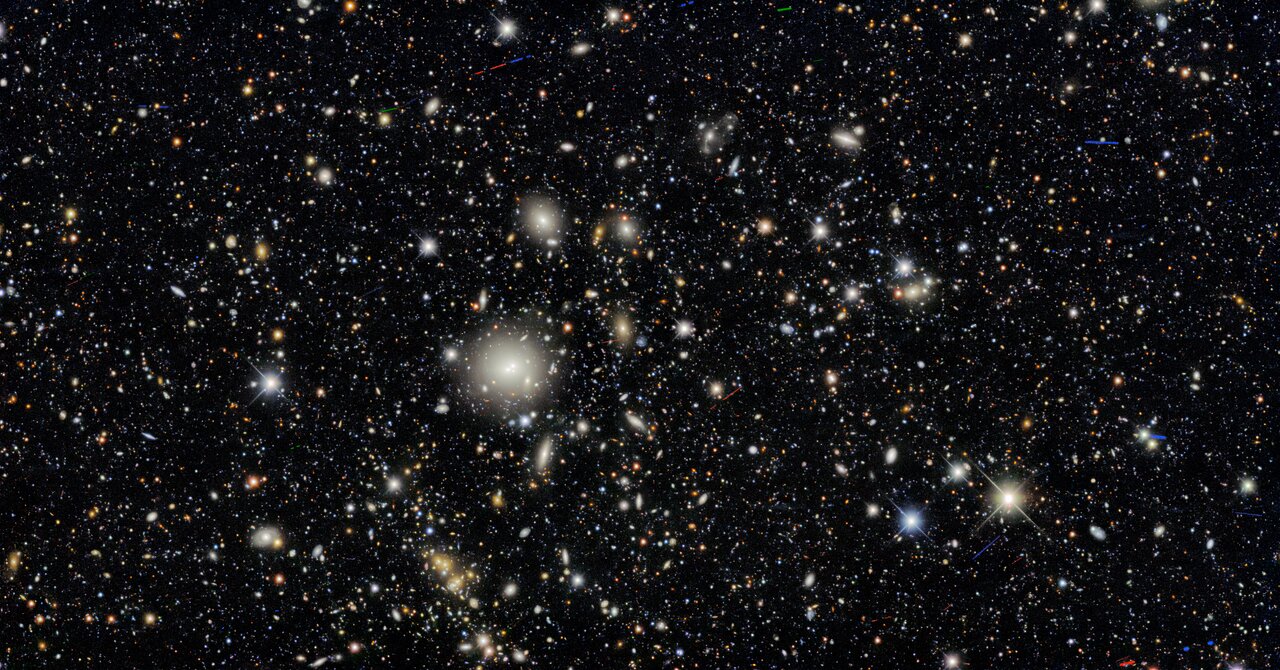In August 2013, the Dark Energy Survey (DES) began its six-year mission to map thousands of galaxies, supernovae, and patterns in the cosmic structure. This international collaborative effort is dedicated to investigating the mysterious phenomenon known as Dark Energy. This theoretical force counter-acts gravity and accounts for 70% of the Universe’s energy-mass density. Their primary instrument in this mission is the 570-megapixel Dark Energy Camera (DECam), mounted on the Victor M. Blanco 5-meter (16.4 ft) telescope at the Cerro Tlelolo Inter-American Observatory in Chile.
Between 2013 and 2019, the DECam took over one million exposures of the southern night sky and photographed around 2.5 billion astronomical objects – including galaxies, galaxy clusters, stars, comets, asteroids, dwarf planets, and supernovae. For our viewing pleasure, the Dark Energy Survey recently released fifteen spectacular images taken by the DECam during the six-year campaign. These images showcase the capabilities of the DECam, the types of objects it observed, and the sheer beauty of the Universe!

Between 2013 and 2019, the Dark Energy Survey imaged one-eighth of the sky, capturing light from galaxies up to 8 billion light-years away. The images it took were mostly concerned with galaxies and galaxy clusters, the purpose of which is to track their movements over time. In so doing, the DES hopes to measure the influence of Dark Energy on the distribution of matter in the cosmos. While astronomers have known since the 1920s that the Universe is expanding, observations since the 1990s have confirmed that roughly 4 billion years ago (10 billion years after the Big Bang), the expansion began to accelerate!
However, the DES also took images of many other kinds of celestial objects, both near and distant, massive and small. This included the ten “deep fields” where the DECam observed galaxies up to 8 billion light-years away using its 62 Charge-Coupled Devices (CCDs). These are sophisticated image sensors designed to capture light from distant galaxies. These were used to create the most accurate map of cosmic evolution over the past 7 billion years. One of these deep fields was featured in the collection and showed a massive clustering of galaxies in the direction of the constellation Sextans.
Closer to home, the DECam observed the center of the Milky Way and captured images (one of which was included in the collection) that provide a detailed look at the “Galactic Bulge.” This image also illustrates how the clouds of gas and dust that make up the interstellar medium obscure light from more distant objects. Also closer to home, the Dark Energy Survey spotted Comet Lovejoy shortly after it was discovered (in August of 2014) and at a distance of about 82 million km (51 million mi) from Earth.
Speaking of objects closer to home, the DECam also took pictures of globular clusters throughout the Milky Way. These spherical clusters are made up of tens of thousands to millions of stars held together by gravity that are more concentrated toward the center. As part of the collection, the DES provided an image of the NGC 288 cluster located about 28,700 light-years from Earth in the constellation Sculptor. These objects are of interest to astronomers because they can offer insight into how stars and galaxies form and evolve.

The DECam also captured several deep views of the Milky Way’s neighbor galaxies, including the Small Magellanic Cloud (SMC). These images were part of the Survey of the MAgellanic Stellar History (SMASH), the most extensive survey of the Magellanic Clouds consisting of roughly 4 billion measurements of 360 million objects. The size, composition, and proximity of these galaxies make them valuable places for astronomers to study stellar formation. As neighboring galaxies, they also can provide valuable information on how galaxies grow through mergers.
This collection illustrates the power of modern astronomical surveys and showcases the advanced research performed by observatories today. Each photo was the result of DECam’s five image filters that capture light at different wavelengths – from the near-ultraviolet and visible light to near-infrared (400 to 1,080 nanometers) – which are then combined to create color images. The DECam also has five optical lenses, the largest of which is close to 1 meter (3 ft) wide and weighs about 153 kg (388 pounds). The camera is held stable by a Hexapod, six pneumatically-driven pistons that keep the camera aligned between exposures.
The full list of images can be found here, along with the details of the object and how it fit into the DES campaign.
Further Reading: Fermilab

